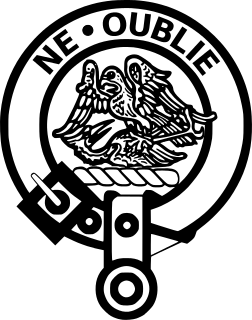 W
WClan Graham is a Scottish clan who had territories in both the Scottish Highlands and Lowlands.
 W
WAbercorn Castle was a 12th-century castle near Abercorn in West Lothian, Scotland.
 W
WBuchanan Auld House is a ruined house in Stirlingshire, Scotland, located 1.5 miles (2.4 km) west of the village of Drymen. Historic seat of the Clan Buchanan, the house was the property of the Chiefs of Clan Buchanan who controlled the surrounding lands from at least 1231 until 1682. Following the death of John Buchanan in the late 17th century, the estate passed to the Grahams who substantially rebuilt the house during the 18th century. The property burned down in 1852 and James Graham, 4th Duke of Montrose commissioned the country house of Buchanan Castle as a replacement, which was built in 1852-1858 and stands 0.5 miles (0.80 km) to the southeast. The ruins of Buchanan Auld House exist today as part of a courtyard attached to the clubhouse of the Buchanan Castle Golf Club, which occupies the surrounding lands.
 W
WBuchanan Castle is a ruined country house in Stirlingshire, Scotland, located 1 mile (1.6 km) west of the village of Drymen. The house was commissioned by James Graham, 4th Duke of Montrose and built in 1852-1858 as a home for the Montrose family, serving as such until 1925. It was built as a replacement for Buchanan Auld House, which is located 0.5 miles (0.80 km) to the northwest but was destroyed in a fire in 1852. The old house and surrounding lands had been the property of the Clan Buchanan but passed to the Clan Graham in the late 17th century. The roof of the building was removed in 1954 and the condition of the house has since deteriorated, but it remains the seat of the Clan Graham.
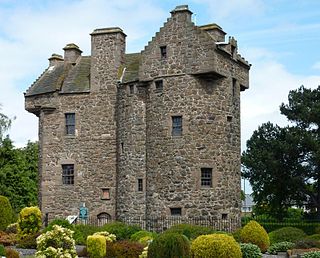 W
WClaypotts Castle is a late medieval castle in the suburban West Ferry area of Dundee, Scotland. It is one of the best-preserved examples of a 16th-century Z-plan tower house in Scotland. Now surrounded by modern housing, the castle is maintained as an Ancient Monument by Historic Environment Scotland.
 W
WDouglas Beresford Malise Ronald Graham, 5th Duke of Montrose KT was a Scottish nobleman.
 W
WDundaff Castle, also known as Sir John de Graham Castle or Graham's Castle, is a ruined 12th century square motte and bailey castle in the Stirling council area, Scotland. The castle was the caput baronium of the Barony of Dundaff.
 W
WLady Emily Foley was a major landowner and benefactress in nineteenth-century England.
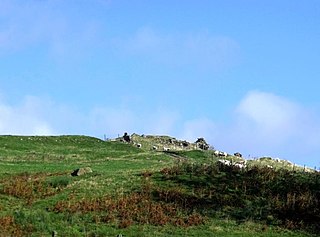 W
WFintry Castle, was a 15th-century castle near Fintry, Stirling, Scotland. The castle was built on the northern slopes of the valley of the Endrick Water.
 W
WCaroline Agnes Horsley-Beresford, Duchess of Montrose (1818-1894) who used the pseudonym "Mr Manton", of 45 Belgrave Square, London and Sefton Lodge, Newmarket, was a notable racehorse owner, a "wildly extravagant woman" who "strode across the racing scene". She was known as the "Red Duchess", from both her scarlet racing colours and her habit of dressing from head to foot in that colour at race meetings. It was said of her in one of her obituaries that "few women in England create more stir in all classes of society". She betted heavily, hardly ever missed attending a race meeting where her horses were competing, and associated almost exclusively with followers of the turf.
 W
WJames Graham, 8th Duke of Montrose, known as Earl of Kincardine until 1954 and Marquess of Graham between 1954 and 1992, is a Southern Rhodesia-born hereditary peer of the Peerage of Scotland and a British Conservative Party politician.
 W
WSir John de Graham of Dundaff was a 13th-century Scottish noble. He was killed during the Battle of Falkirk on 22 July 1298.
 W
WJohn Graham of Claverhouse, 1st Viscount Dundee, known as the 7th Laird of Claverhouse until raised to the viscountcy in 1688, was a Scottish soldier and nobleman, a Tory and an Episcopalian. Claverhouse was responsible for policing south-west Scotland during and after the religious unrest and rebellion of the 1670s/80s.
 W
WKilbryde Castle is a castellated Scottish castle in the Scots baronial style.
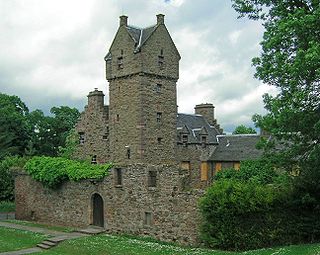 W
WMains Castle is a 16th-century castle in Dundee, Scotland. The castle consists of several buildings surrounding a courtyard, although several of the original western buildings no longer exist. The northern and eastern buildings are where the family would have lived, with the servants occupying the southern quarters. The castle also has a large, six-floor, square tower house with dressed cornerstones, which is typical of 16th-century construction. It is a Category A listed building.
 W
WThe Mormaer or Earl of Menteith was the ruler of the province of Menteith in the Middle Ages. The first mormaer is usually regarded as Gille Críst, simply because he is the earliest on record. The title was held in a continuous line from Gille Críst until Muireadhach IV, although the male line was broken on two occasions. A truncated version of the earldom was given two years later to Malise Graham, 1st Earl of Menteith, in compensation for loss of the Earldom of Strathearn, which was a likely result of the execution of the Duke of Albany.
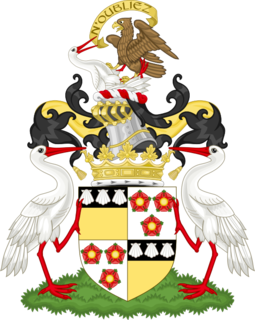 W
WDuke of Montrose is a title that has been created twice in the Peerage of Scotland. The first creation was in 1488 for David Lindsay, 5th Earl of Crawford. He was forced to forfeit the dukedom later in 1488, but it was restored to him in 1489, although only for his lifetime. Thus, it was not inherited.
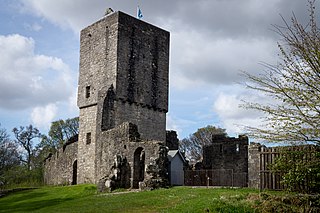 W
WMugdock Castle was the stronghold of the Clan Graham from the middle of the 13th century. Its ruins are located in Mugdock Country Park, just west of the village of Mugdock in the parish of Strathblane. The castle is within the registration county of Stirlingshire, although it is only 2 kilometres (1.2 mi) north of Milngavie, East Dunbartonshire, on the northern outskirts of Greater Glasgow.
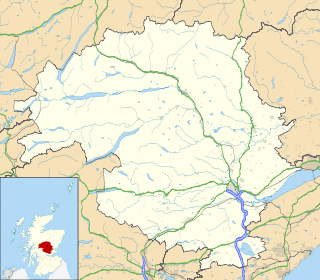 W
WOld Kincardine Castle was a 13th-century castle near Auchterarder in Perth and Kinross, Scotland. The castle was located on a promontory overlooking the glen. Sir David de Graham of Cardross received the lands of Kincardine from the Earl of Strathearn and started construction of the castle shortly afterwards. It formed a quadrangle, surrounded by a moat.
 W
WTalla Castle, also known as Inch Talla or Inchtalla Castle, was a 15th-century castle on Inchtalla upon Lake of Menteith, Scotland.
 W
WViolet Hermione Graham, Duchess of Montrose was a British philanthropist and anti-suffragist. Graham served as president of the Scottish branch of the Women's National Anti-Suffrage League. Her husband was Douglas Graham, 5th Duke of Montrose.